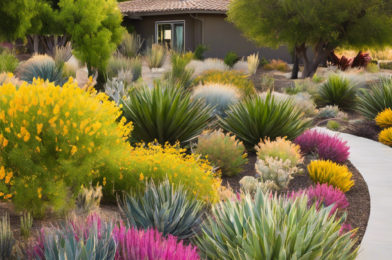Creating a beautiful flower garden can be a rewarding endeavor that adds color, fragrance, and life to your outdoor space. With careful planning and a bit of creativity, you can design a stunning floral oasis that will be the envy of your neighbors. Here are some tips to help you get started on this exciting project:
First, consider the location of your flower garden. Choose an area that receives ample sunlight, as most flowering plants require at least six hours of sunlight per day. Ensure that the site has well-drained soil and easy access to water. Preparing the soil by mixing in compost or other organic matter will give your flowers a nutritious start. Take into account the hardiness zone of your region and choose flowers that are suitable for your climate. This ensures that your plants will thrive and bloom year after year.
Selecting a color scheme for your flower garden can provide a cohesive and beautiful look. You might opt for a monochromatic theme, using different shades and tints of a single color, or go for a complementary color scheme, where colors opposite each other on the color wheel are paired together. Consider the height and size of your flowering plants, aiming for a variety of heights to create visual interest and depth in your garden. Tall, erect plants, such as delphiniums and foxgloves, can add height to the back of your flower bed, while creeping varieties like thyme and alyssum spill gracefully over the front edges.
Mixing annuals and perennials is a great way to ensure a dynamic and ever-changing display of colors throughout the seasons. Annuals will provide an explosion of color for one season, while perennials return year after year, offering continuity and structure to your garden. Remember to incorporate plants with different blooming times so that there is always something new and interesting emerging in your flower garden. Spring-blooming bulbs, such as daffodils and tulips, can add early color, while late-summer blooming flowers like sedum and asters provide a vibrant finale.



